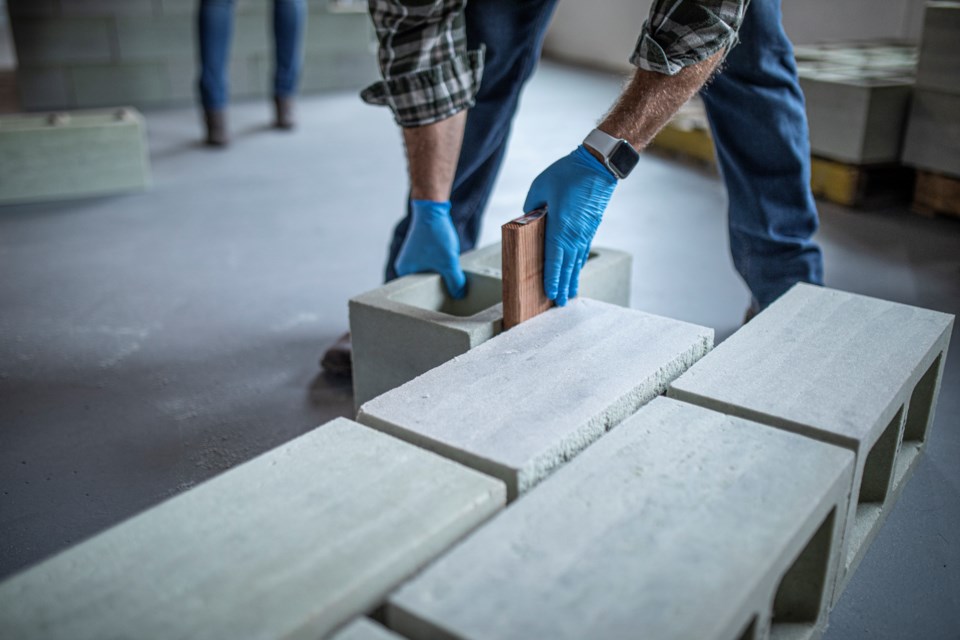Prometheus Materials, a Longmont-based company, that is developing a bio-concrete solution made of algae to combat the environmental impact of traditional concrete, which accounts for approximately 7% of the Earth's CO2 emissions, revealed that its proprietary bio-concrete recently tested to absorb sound 12 times more effectively than traditional concrete.
Loren Burnett, the president, CEO, and co-founder of Prometheus Materials emphasized the company's commitment to impartiality, sharing that Prometheus Materials outsourced the testing of their product to Johns Manville Technical Center, in Littleton, Colorado to ensure unbiased results.
Their bio-concrete's capacity to absorb sound far exceeded that of traditional concrete demonstrating a noise reduction coefficient of 0.60, a rating indicating 60% sound absorption — 12 times that of traditional concrete. Unlike conventional concrete, which reflects sound, creating echoes and poor acoustics in enclosed spaces, Prometheus Materials' bio-concrete absorbs and disperses sound within the material.
The discovery of their bio-concrete's sound absorption capabilities was somewhat unexpected. While developing the bio-concrete, the team at Prometheus Materials noticed some unique characteristics of their product.
“We started noticing different qualities about it. And we thought it sounded different. We also thought that it might have some insulation capabilities, which concrete doesn't have. That's why we hired Johns Manville to do testing and prove it and as it turns out, it proved to be true,” Burnett said.
Burnett emphasized that Prometheus Materials' bio-concrete blocks have undergone rigorous testing and have been certified by ASTM — an independent regulatory agency that certifies building materials — and are certified for use as both load-bearing and non-load-bearing walls. Apart from sound absorption, the bio-concrete blocks also have the advantage of blast resistance.
"This was built under a contract with the US Department of Defense. They wanted to protect troops from blasts and bullets. At the end of the project, the DoD sent our material to an army ballistics lab, where they shot 50-caliber projectiles and subjected them to bomb blasts,” Burnett said. “They said they had never seen a material act like this before. Concrete, when hit with enough energy, will just crack. But with us, we didn't crack. We dissipated that energy within our system."
The cost of Prometheus Materials' bio-concrete blocks will be in line with regular high-carbon blocks. Currently, their blocks are not yet utilized in any construction projects. The primary hurdle they face is securing approval from local building codes, a process that demands both time and educational outreach.
"They're doing a $75 million rehab on that building [Hellems Arts & Sciences building], and we will be on the interior walls. They want to put our blocks on interior walls that are highly visible to traffic, with storyboards to tell the story that these blocks are our zero carbon alternative material blocks made out of algae, originally invented at the University of Colorado," Burnett said.
Prometheus Materials is also currently in the process of raising funds for a new 35,000-square-foot production facility either in or near Longmont, and their bio-concrete will of course be used in the building process
"We're excited about being in Longmont and are in the process of raising our next round of funding to build a production facility here. We're very excited about that," Burnett said.
This bio-concrete, with its sound absorption and other beneficial properties, has the potential to reshape the construction industry. With sustainability becoming a key focus in construction, Prometheus Materials' bio-concrete aims to offer a viable and eco-friendly alternative that could soon become the new standard in building materials.


.jpg;w=120;h=80;mode=crop)
